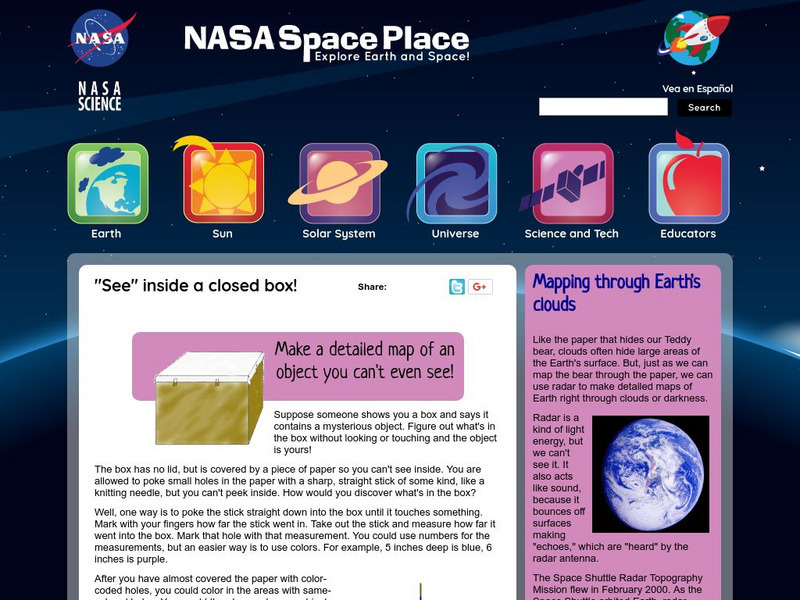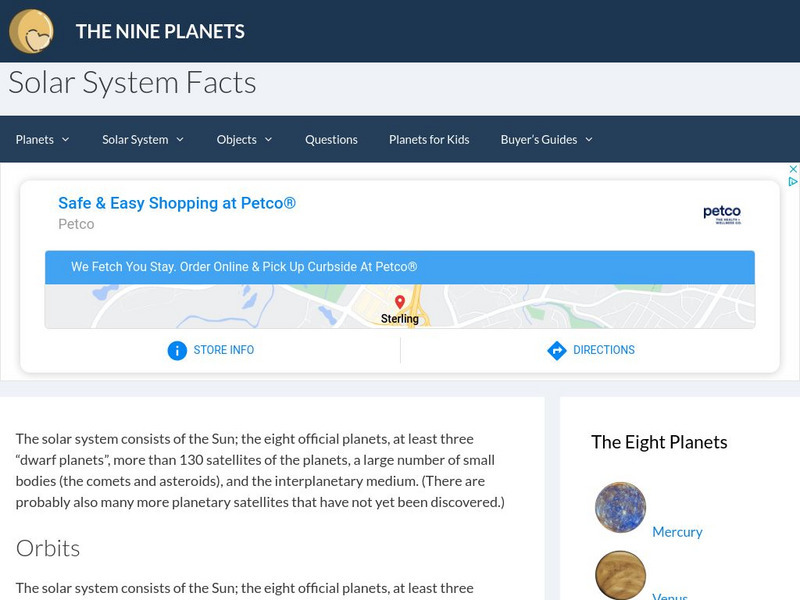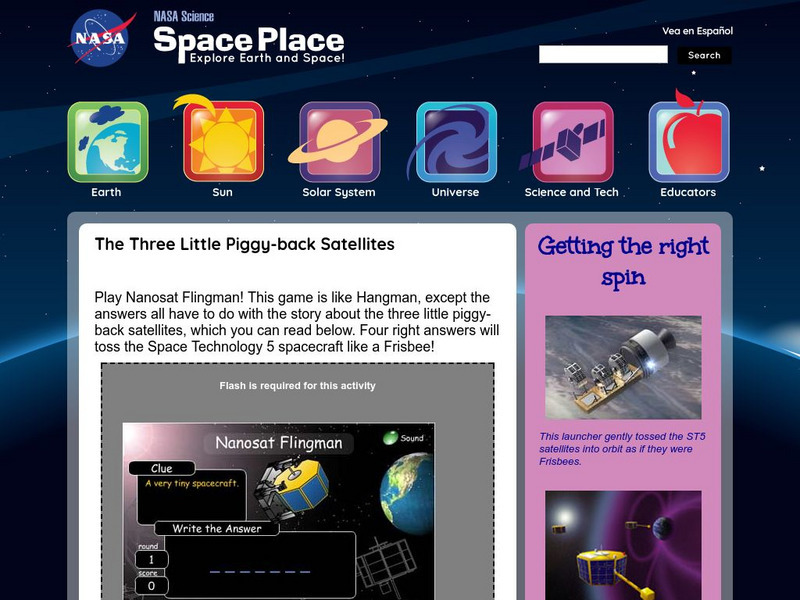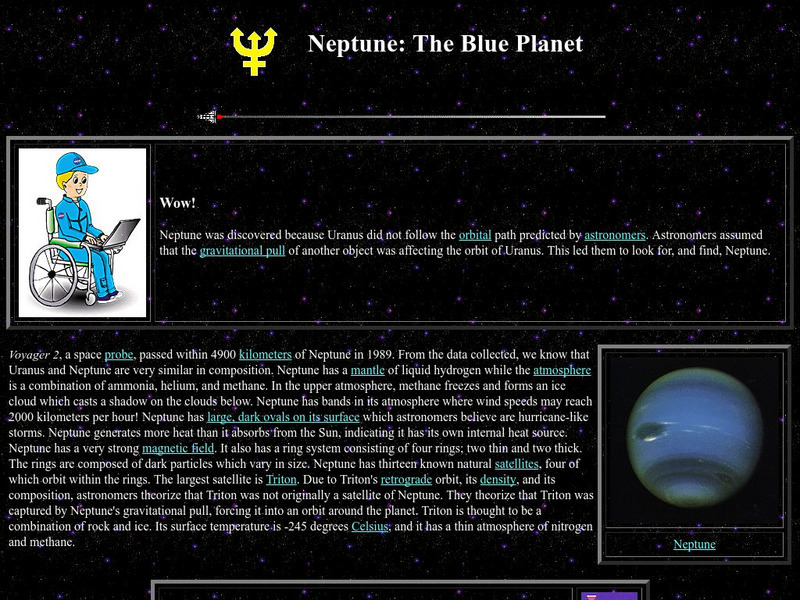National High Magnetic Field Laboratory
Magnet Academy: Timeline of Electricity and Magnetism: 1960 1979
Computers evolve into PCs, researchers discover one new subatomic particle after another and the space age gives our psyches and science a new context.
NASA
Nasa: Probing Earth Through the Clouds
This site from the National Aeornautics and Space Administration provides a fun activity for the subject. "Clouds often hide large areas of the Earth's surface. We can use radar to make detailed maps of Earth right through clouds or...
NASA
Nasa: Imagine the Universe: Gamma Ray Bursts
What is a Gamma-ray Burst? Why do scientists study gamma-ray bursts? Find your answers to these questions as well as view additional resources on this topic.
NASA
Nasa Space Science Data Archive: Photo Gallery: Jupiter
Images of Jupiter and its moons. Thumbnails lead to small JPEG graphic files. Some link to large, high-resolution TIFF files. Nearly all have a detailed caption file link.
TeachEngineering
Teach Engineering: Find It!
In this activity students will learn the basic concept of Global Positioning Systems (GPS) using triangulation and measurement on a small scale in the classroom. Students discover how GPS and navigation integrate mathematic and...
Mocomi & Anibrain Digital Technologies
Mocomi: Global Positioning System
Developed by the U.S. military, The Global Positioning System (GPS) is a space-based satellite navigation system that provides location and time information in all weather, anywhere on or near the Earth.
Nine Planets
The Nine Planets: An Overview of the Solar System
A detailed overview of the history, mythology, and current scientific knowledge of each of the planets and moons in the solar system.
Read Works
Read Works: Objects in Space
[Free Registration/Login Required] An informational text about some of the objects circling the Earth. A question sheet is available to help students build skills in reading comprehension.
NASA
Nasa: The Space Place: The Three Little Piggy Back Satellites
This site from the National Aeronautics and Space Administration allows one to read the "Three Little Piggy-back Satellites," and then play the Nanosat Flingman game. [Requires Shockwave]
NASA
Nasa Star Child: The Blue Planet (Level 2)
A good general introduction to planet Neptune for students. Has many links to more detailed information about the planet throughout the page, as well as special links for interesting facts. Also features a printable version of the page.
NASA
Nasa Star Child: Space Travel (Level 1)
Learn about the history of space travel. Audio content is included as well as vocabulary words linked to a glossary of terms.
Physics Classroom
The Physics Classroom: Circular Motion Principles for Satellites
From The Physics Classroom. Uses easy- to-understand language to discuss how circular motion principles apply to the motion of satellites. Describes the tangential velocity and centripetal acceleration of a satellite. Includes many...
Physics Classroom
The Physics Classroom: Mathematics of Satellite Motion
The mathematics associated with the motion of satellites is described. Equations (for period, velocity, acceleration and force) are stated, symbols described, and sample problems solved. Includes five practice problems with solutions and...
Physics Classroom
The Physics Classroom: Energy Relationships for Satellites
The orbits of satellites are described and an energy analysis is performed. Kinetic, potential and total mechanical energy are explained and applied to the motion of satellites.
Physics Classroom
The Physics Classroom: Kepler's Three Laws
The three laws of planetary motion as described by Kepler are stated and elaborated upon. Useful graphics and an easy-to-understand language are used to explain the nature of planetary motion. Both conceptual and mathematical. Includes a...
Georgia State University
Georgia State University: Hyper Physics: Earth Orbit Velocity
A discussion and statement of an equation for orbital speed. An interactive JavaScript form allows the user to investigate the relationship between orbital height and orbital speed. A very good opportunity to practice and receive...
Physics Classroom
The Physics Classroom: Satellite Motion
An animation depicting the path of projectiles launched at various launch speeds from the fictional Newton's Mountain. Accompanying text discusses satellite motion and the requirements of orbital motion. Links to further information is...
Dan Satterfield
Wild Weather: Dan's Wild Wild Weather Page
A site to find out anything you want to know about weather, including clouds, tornadoes, satellites, radar, wind, climate, and more. Suitable for all ages. Also includes games, quizzes, and teacher resources.
NASA
Nasa Space Science Data Archive: Neptunian Satellite Fact Sheet
A pair of small tables of data that contain just about everything known about the moons of Neptune.
Other
Ciprian Sufitchi: Live Real Time Satellite Tracking
A captivating report that allows you to track specific satellites and see where they are in their orbit.
Physics Aviary
Physics Aviary: Practice Problems: Finding Mass of a Planet
Students must determine mass of a planet based on the orbital motion of a satellite around the planet.
Other
Swedish Space Corporation
This is the official homepage of the Swedish Space Corporation, a government owned corporation devoted to space and space technology. Interesting space and satellite images and information.
US Geological Survey
Us Geological Survey: Saturn Satellites
This resource provides images of Saturns satellites.
Other
Discover and Learn: The Asteroid Belt
Read a very brief article on the asteroid belt. Includes an image of an asteroid, as well as a chart showing the asteroid belt's location in relation to Jupiter and Mars.

















